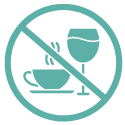Parasomnias
Abnormal Behaviors, Movements, and Emotions During Sleep
What are Parasomnias?
Parasomnias may sound complex, but they are simply a group of sleep disorders that can lead to unusual behaviors or experiences during sleep. From sleepwalking and night terrors to teeth grinding and sleep talking, parasomnias can take various forms, affecting both adults and children.
GOOD HEALTH
Truly starts with great sleep
Sleepwalking, talking in your sleep, or experiencing vivid nightmares – these nightly struggles are not a normal part of sleep. We offer you the best advice on how to deal with this if you are suffering from any of these issues.
Common Types of Parasomnias:
Human sleep is composed mainly of two stages which involve non-rapid eye movement (NREM) and rapid eye movement (REM). Parasomnias can emerge from both NREM or REM but NREM-related parasomnias are more common.
Parasomnias related to Non-REM sleep include:
- Sleepwalking
- Sleep terrors
- Confusional arousals
Parasomnias related to REM sleep:
- Nightmare disorder
- Recurrent isolated sleep paralysis
- REM sleep behavioral disorder
Other parasomnias include:
- Bedwetting
- Sleep-related groaning
- Sleep-related hallucination
- Sleep-related eating disorder
- Exploding head syndrome
Why do you have parasomnia?
Parasomnias is more common in children but can affect people from any age group. It can be caused by fever, stress, head injury, pregnancy, systemic disease, psychiatric disorders, and neurological illness.
Parasomnias are highly associated with family history, so if any person in your family has parasomnias you are at risk of getting it. Moreover, certain medications can disrupt your sleep like depression medicines, seizure medicines, drugs used to treat blood pressure, and anti-allergics.
What are the Symptoms of Parasomnia?
- Insomnia or difficulty in sleep
- Confusion when waking up
- Felling of tiredness the whole day
- Night walking
- Displaying verbal and emotional activities
- Unknown cuts and bruises on the body
How to manage?
How can you manage parasomnias?
Identify the health-related issue or medication that is disturbing your sleep. Treat the condition by seeking medical assistance. The general measures you can take at home are:

Sleep 7-9 Hours a Day
Prioritize adequate sleep each night, aiming for 7-9 hours, to promote overall sleep health and reduce the likelihood of parasomnia episodes

Maintain a Regular Sleep-Wake Cycle
Establish a consistent sleep routine by going to bed and waking up at the same time daily, reinforcing a stable sleep-wake cycle.

Avoid Screen Time Before Going to Sleep
Minimize exposure to screens before bedtime to reduce the impact of blue light on your sleep quality and lower the risk of parasomnia occurrences.

Limit the Use of Alcohol and Caffeine
Moderate or avoid alcohol and caffeine intake, especially in the hours leading up to bedtime, to promote a more stable and uninterrupted sleep.

Keep Your Room Temperature Cool:
Maintain a cool and comfortable room temperature for optimal sleep conditions, reducing the likelihood of disruptions related to parasomnia.
- Fleetham JA, Fleming JEE. Parasomnias. Canadian Medical Association Journal [Internet]. 2014 May 5;186(8):E273–80. Available from: https://doi.org/10.1503/cmaj.120808
- Singh S, Kaur H, Singh S, Khawaja I. Parasomnias: A Comprehensive Review. Cureus [Internet]. 2018 Dec 31; Available from: https://doi.org/10.7759/cureus.3807
- Bollu PC. Sleep medicine: Parasomnias [Internet]. PubMed Central (PMC). 2018. Available from: https://www.ncbi.nlm.nih.gov/pmc/articles/PMC6139852/
- Pressman MR. Factors that predispose, prime and precipitate NREM parasomnias in adults: Clinical and forensic implications. Sleep Medicine Reviews [Internet]. 2007 Feb 1;11(1):5–30. Available from: https://doi.org/10.1016/j.smrv.2006.06.003
- Ramar K, Olson EJ. Management of common sleep disorders [Internet]. AAFP. 2013. Available from: https://www.aafp.org/pubs/afp/issues/2013/0815/p231.html



